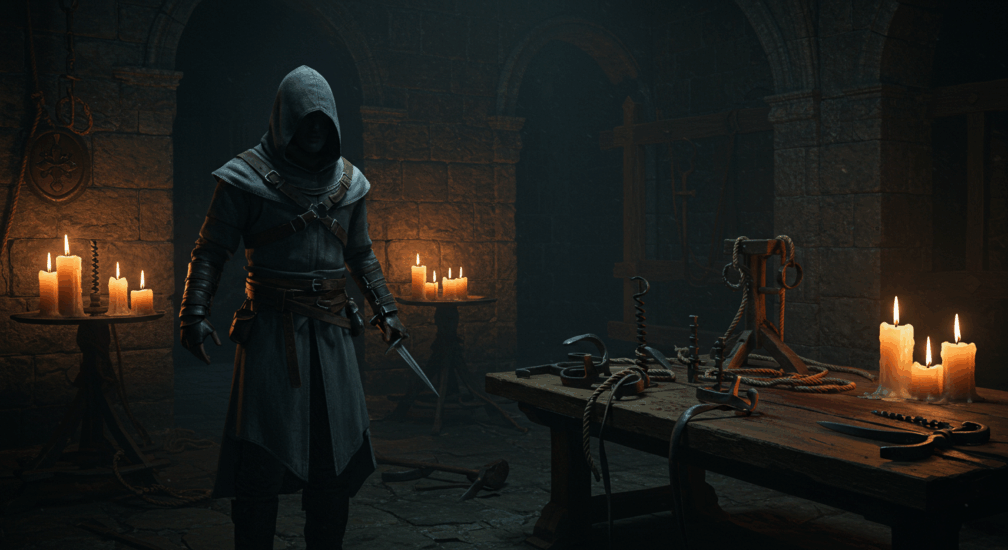The image of a hooded figure, cloaked in darkness, silently navigating the alleys of a medieval city, isn’t just fiction. Assassins in medieval times were real, and they played a chilling role in the political, religious, and military arenas of their age. Operating in the shadows, these agents of death used stealth, fear, and pain as tools of power and control. But beyond killing, they often mastered the art of extraction – torturous methods designed to wrest secrets from their victims.
Weapons of Silence: The Tools of the Medieval Assassin
The average medieval assassin did not rely on brute force. Instead, they were armed with specialized and sinister tools. The infamous medieval assassin dagger, often curved or double-edged, was made for silent, lethal attacks. Some daggers were coated with poison, ensuring a fatal outcome even from a shallow wound. Alongside the blade, medieval assassin weapons included garrotes, hidden needles, throwing knives, and even smoke powders to disorient their targets.
In close quarters, subtlety was everything. Assassins often wore medieval assassin armor that was lightweight, silent, and blackened to blend into the shadows. Their gear prioritized mobility and silence over protection.
Torture as a Tool: Beyond the Kill
While assassination was one objective, information was often more valuable than a life. To extract confessions or critical secrets, these silent killers turned to cruel, calculated techniques. The most feared medieval torture techniques weren’t just devices found in dungeons-they were mobile and discrete, perfect for field use.
Small iron thumbscrews, heated metal pins, and tightening cords were among the portable instruments used by assassins. These methods, rooted in medieval interrogation methods, caused intense pain without immediate death, allowing for prolonged questioning and manipulation. Medieval punishment and torture wasn’t always public; many of the most brutal acts occurred in secrecy, in backrooms or during dark, moonless nights.
Historical Assassins Methods and Mind Games
The historical assassins methods also included psychological tactics. Victims were often left disoriented, drugged, or blindfolded. The goal wasn’t just to inflict pain, but to break the mind. Through a blend of fear, intimidation, and mental exhaustion, assassins coerced enemies into confession or betrayal.
Elements of manipulation, secrecy, and shadow warfare made these figures more than just killers-they were enforcers of fear and silence. Often acting under the command of nobility, clergy, or secret societies, they operated outside traditional justice systems, writing their own laws in blood.
From Fiction to Reality: Museums Preserving the Darkness
Many of these grim tools and tales have been preserved in chilling detail at the Medieval Torture Museum in Chicago. Visitors can witness the dark artistry behind the devices used not only by torturers but also by stealthy enforcers. Exhibits explore the tools of medieval assassins, placing them in the broader context of fear-based control.
Similarly, the Medieval Torture Museum in LA presents a deep dive into the psychology of medieval brutality. With immersive displays and reconstructions of shadowy torture chambers, guests can see firsthand how stealth, silence, and precision were turned into tools of power.
Experience It Yourself: Cool Weekend Activities in St. Augustine
Looking for cool weekend activities St. Augustine? Step into the eerie halls of the city’s medieval torture museum and immerse yourself in tales of hooded killers and the secrets they unearthed through fear. The museum experience blurs the line between history and horror, offering a visceral glimpse into the lives of these mysterious figures.
Learn More About Medieval Shadows
To further explore the world of medieval cruelty, mystery, and tactics, be sure to follow our regularly updated blog. From profiles of historical assassins to breakdowns of ancient devices, our blog deepens the experience for all dark history enthusiasts.






